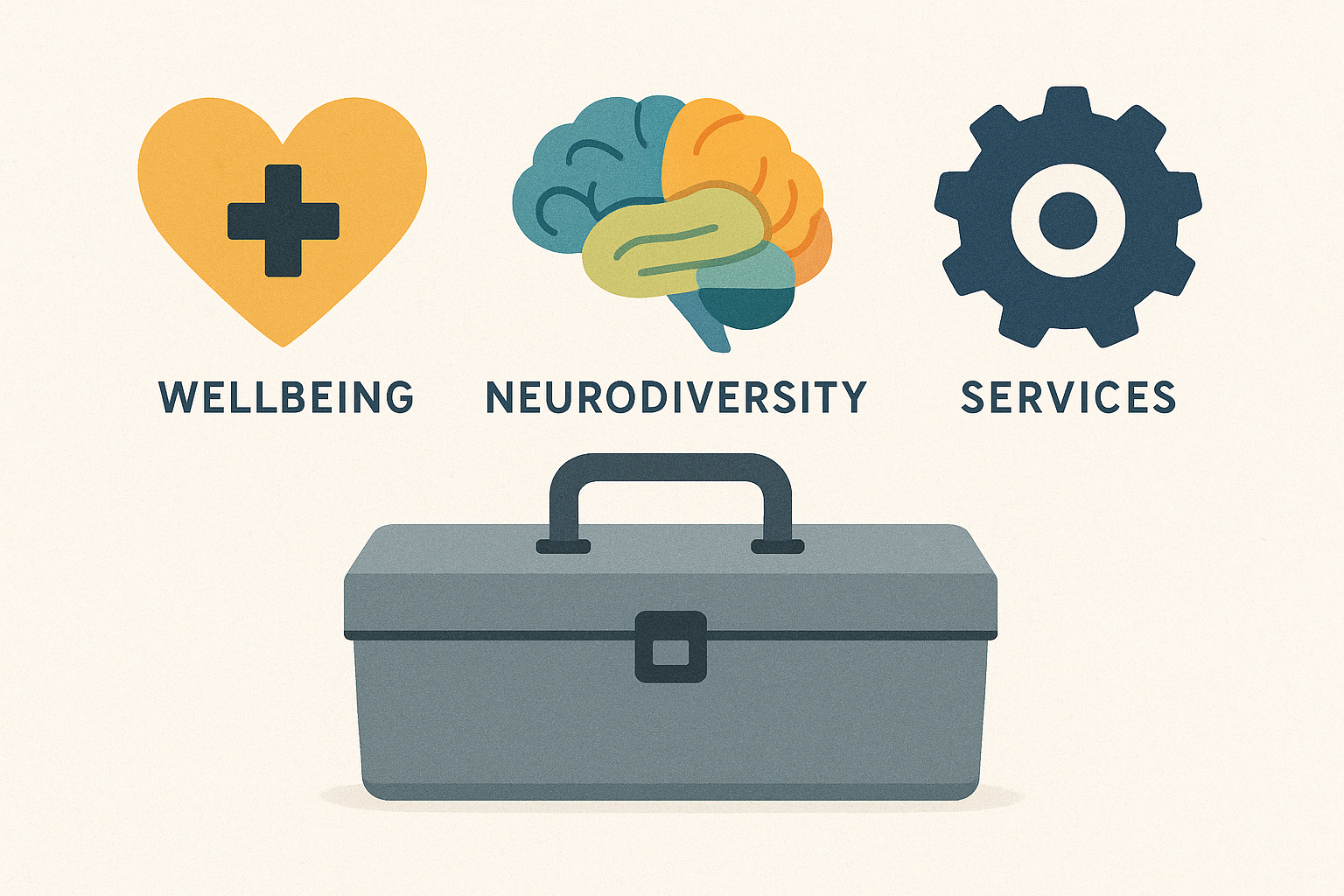
Pilot. Supporting Neurodivergent clients: A guide for practitioners facilitating domestic abuse perpetrator interventions
- 10 Sections
- 65 Lessons
CONFIDENTIAL Supplementary materials
2 Lessons
Practitioner Questionnaire
1 Lesson
Part 1: Introduction to the Guide
8 Lessons
- 1.1 What is this guide about
- 1.2 Definition of key terms
- 1.3 Who is this guide for?
- 1.4 How to use this guide
- 1.5 Structure of the Guide
- 1.6 Where did this information come from? (Funding and project partners)
- 1.6 Where did this information come from? (Building on previous research)
- 1.7 What is and is not within the scope of this guide?
Part 2: An introduction to neurodivergence
7 Lessons
Part 3: Neurodivergence and domestic abuse
3 Lessons
Part 4: SPACE: A framework for supporting neurodivergent clients in domestic abuse perpetrator interventions
2 Lessons
Part 5 Supporting neurodivergent clients
31 Lessons
- Introduction to Part 5
- 5.1 BUILDING AND ENVIRONMENT
- 5.1a Building
- 5.1b Intervention rooms
- SCENARIO ONE: The Unknown
- 5.2 ASSESSMENT OF NEEDS AND ADAPTATIONS
- 5.2a Initial contact and planning
- 5.2b Initial appointment and exploring neurodivergence
- 5.2c Exploration of needs and adaptations
- SCENARIO TWO: Sensory overload
- 5.2d Managing distress: identifying a client’s coping strategies.
- 5.2e Identifying communication and learning needs
- 5.3 UNDERSTANDING RISK TO PARTNER AND CHILDREN
- 5.3a Understanding specific challenges in the home environment
- 5.3b Identifying coping strategies in the home
- 5.4 SUPPORTING AND MAINTAINING ENGAGEMENT IN AN INTERVENTION
- SCENARIO 3: CONFLICT IN THE GROUP
- 5.4a Group and intervention rules and agreements
- EXAMPLE STATEMENT ON NEURODIVERSITY AND RESPECTING DIFFERENCE
- 5.4b Providing predictability during sessions
- 5.4c Communicating information and facilitating learning
- 5.4d Recognising and preventing distress
- 5.4e Responding to distress
- 5.4f Group work: managing competing needs
- 5.5 ADDRESSING COERCIVE STRUCTURAL CONTROL IN BEHAVIOUR CHANGE WORK
- 5.5a Unpicking neurodivergence and coercive strategies
- EXAMPLES OF RECIPROCAL, NON-ABUSIVE NEURODIVERGENT RELATIONSHIPS
- 5.5b Taking individual responsibility for regulation
- 5.6 SUPPORTING SAFE INTERVENTION EXIT AND SOURCES OF SUPPORT
- 5.6a Supporting safe intervention exit
- 5.6b Identifying safe sources of support
Part 6 Practitioner wellbeing and care
2 Lessons
Part 7 Sources of support
3 Lessons
Questions to explore with clients – a quick reference guide
6 Lessons
- Appendix introduction
- A1a. Questions for exploring neurodivergence
- A1b. Questions for exploring communication and learning needs
- A1c. Questions for exploring the home environment
- A1d. Questions to support learning facilitation and check understanding
- A1e. Questions to explore intent behind and impact of behaviour
This guide is about domestic abuse in the context of neurodivergence. His Majesty’s Prisons and Prison Service and Ministry of Justice have identified neurodiversity as a research and business priority. The recent Home Office Standards for Domestic Abuse Perpetrator Interventions (Home Office, 2023) make it incumbent upon service providers to consider the needs of a neurodiverse client base (p.22). Yet, practitioners have often had little support or guidance about how to work from a neuro-inclusive perspective (Renehan, forthcoming). This guide aims to help fill some of these gaps by:
- increasing awareness, understanding and confidence of neurodiversity amongst those working within the domestic abuse perpetrator intervention sector;
- examine and clarify the differences between coercive control (an abusive behaviour) and structural control (a coping strategy deployed by many neurodivergent people) and explore how these dynamics can intersect in practice;
- support organisations to design environments and processes that recognise the needs of a neurodiverse population of clients to enhance accessibility and engagement;
- creating neurodivergent friendly workplaces that recognise, value and support neurodivergent colleagues working in this sector.